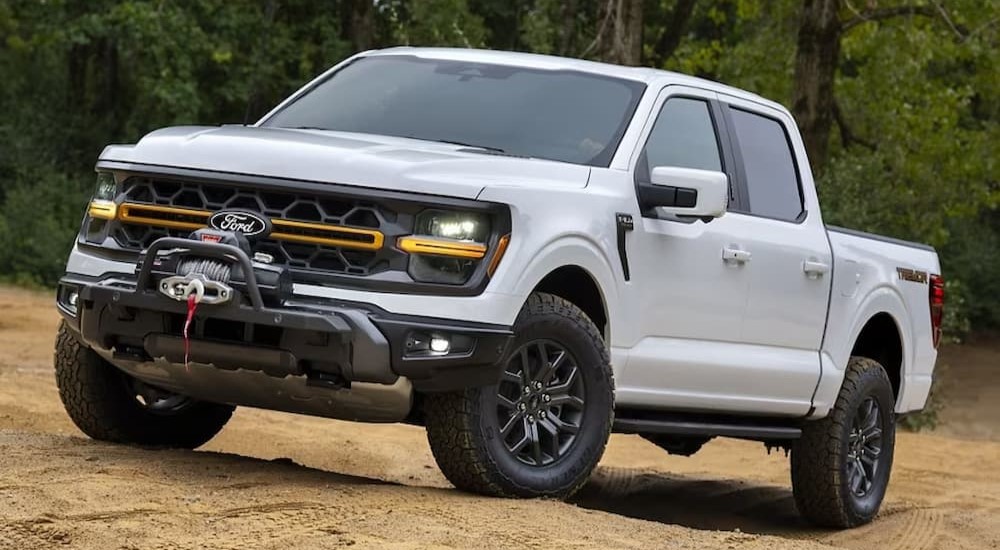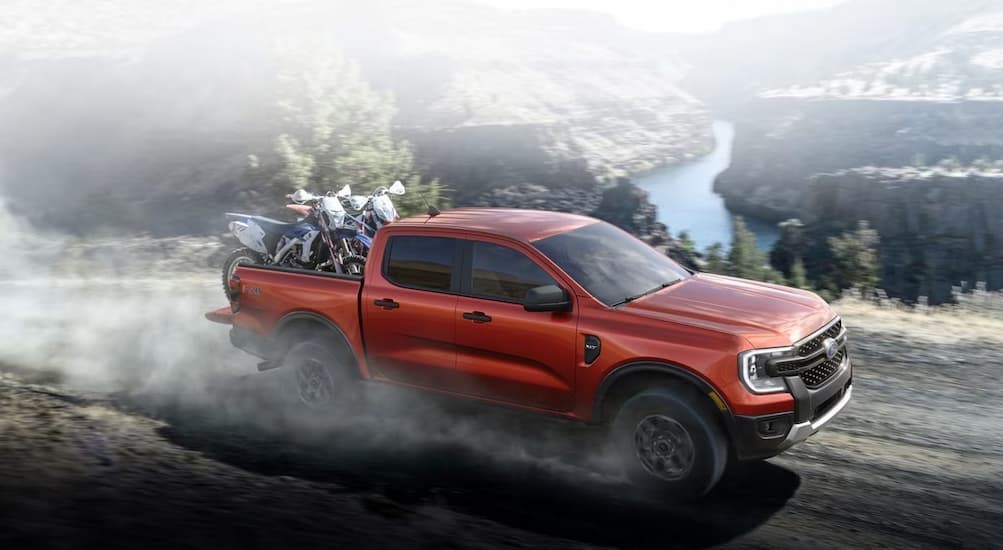A four-wheel drive (4WD) vehicle can be a valuable addition to any garage, allowing a driver to tackle some of the most challenging road conditions, put in some serious work, or unwind at their local off-road trails with confidence. That said, 4WD vehicles require a little more TLC than their two-wheel-drive cousins. It’s a small price to pay for the sort of utility, safety, and performance such systems can provide, but it can mean extra work for drivers.
There are a lot of specific components that go into allowing a vehicle to switch between different driving modes, so it’s important not to let routine maintenance fall by the wayside if you want to enjoy consistent performance and reduce the need for auto repair. Read on as we analyze some common signs and symptoms of an ailing 4WD system, cover the routine tasks that should be part of every maintenance schedule, and discuss some other tips and best practices that’ll keep you on the road and enjoying all the benefits of your 4WD vehicle.
Signs and Symptoms
There are a few key ways to spot a 4WD system that might be in need of a little maintenance or repair. The most obvious symptom of a faulty 4WD system is an illuminated warning light on your dashboard. The specific design of these warning lights varies by make and model, but it’s usually as simple as an icon reading “4WD” or one that shows a pictogram of four wheels connected by a driveshaft and two axles.
There are many things that can trigger this warning light, but there tend to be four prime suspects. Let’s take a brief look at each of these and see how easy it can be to diagnose a pesky 4WD light…
Incomplete Gear Shift
The first cause of a 4WD warning light has to do with not completing a gear shift, which happens when a driver switches between 2WD and 4WD without bringing the vehicle to a complete stop. The vehicle essentially gets stuck between 2WD and 4WD as the gears haven’t fully engaged, which can cause all sorts of problems if not promptly addressed.
Overheated Transfer Case
An overheated transfer case is another common cause of an illuminated 4WD light. Overheating can prevent a transfer case from properly routing power between the front and rear axles and can often be attributed to low transfer case fluid levels, improper use, or lack of airflow. A transfer case is entirely air-cooled, so running a vehicle in a low-range gear, letting it get too low on fluid, or installing parts like skid plates that prevent it from dissipating heat can all easily lead to overheating.
Typical Sensor Issues
An OBD-II diagnostic trouble code (DTC) is your vehicle’s way of telling you what’s on its mind. There are a number of 4WD-related DTCs that can lead to a warning light, though the issue might have less to do with a malfunctioning part or sensor and more to do with faulty wiring. Some common DTC codes that might pop up in a 4WD vehicle include P1887 (Four-Wheel Drive Control Solenoid Circuit Failure), P1867 (Transmission Transfer Case Contact Plate General Circuit Failure), and P1875 (Transmission Automatic Hall Effect Sensor Power Circuit Short To Battery or 4WD Low Switch Circuit Electrical).
DTCs that are seemingly unrelated to the 4WD system can also cause the 4WD to light up. These include codes associated with the wheel speed sensor, transmission speed sensor, and throttle position sensor. These will often trigger a general ‘check engine’ light but can also cause the 4WD icon to show up unexpectedly.
Faulty Components
Damage or wear affecting vital 4WD components like the differential axle or anti-lock brakes (ABS) can lead to a 4WD light, especially if you’re engaging in some hardcore off-road driving or have recently had your brake discs and rotors resurfaced. Those driving older 4WD vehicles should also consider the locking hubs as a possible culprit; these allow drivers to manually disconnect the front axle from the driveshaft, which can become damaged due to mud, rust, or other contaminants.

Keys Areas in Your 4WD Maintenance
Front and Rear Differentials
A differential might seem complex for those outside of the 4WD world, but in reality, it’s nothing more than a system that allows wheels on the same axle to turn at different speeds. Differentials allow for maximum traction in challenging road conditions and are a staple of any trail-worthy off-road vehicle. They also require regular maintenance to stay in good working order; this mainly comes down to regular fluid changes, which should be scheduled for every 30,000 to 36,000 miles.
Some 4WD vehicles call for a full differential fluid change every 15,000 miles, so make sure to consult the owner’s manual for the specifics of your make and model. It’s also important to pick the right type of differential fluid, which is also often referred to as gear oil. Limited-slip differentials (LSD) and locking differentials are two of the most popular types of differentials and require different types of fluid to perform at their best. Again, the specifics of the fluid should be outlined in your owner’s manual.
Transfer Case
The transfer case is responsible for distributing power to each wheel, which makes it an indispensable part of any 4WD system. Like the front and rear differentials, the fluid in the transfer case should be replaced every 15,000 to 30,000 miles, though this schedule might need to be accelerated in vehicles that are regularly used for heavy-duty applications like towing, hauling, and off-road driving.
Replacing your transfer case fluid is also a good excuse to give the system a full inspection and cleaning, especially if you want to avoid a costly repair. A transfer case fluid replacement (which is often done in tandem with a differential fluid replacement) costs around $100, but a faulty transfer case can lead to a bill that’s anywhere between $2,000 and $4,000, so this is certainly one of those cases where an ounce of prevention is worth a pound of cure.
Transfer Case Motor
If you want to be really thorough, you might consider servicing your transfer case motor as part of the inspection and refill process. This involves coating the motor’s electrical connector with dielectric grease, which can go a long way toward preventing costly corrosion.
Locking Hubs and Joints
These last two maintenance tips are reserved for older 4WD vehicles that are designed with locking hubs and old-school joints. As we mentioned above, locking hubs are parts mounted to the front wheels that provide a way of manually switching a vehicle between 4WD and non-4WD. Their low-lying location means they’re prone to getting caked with mud and soaked in water, both of which can lead to corrosion and damage. Regularly greasing your locking hubs is one way to avoid this outcome, so make sure to add that task to your maintenance checklist.
While most newer 4WD vehicles come with maintenance-free joints, older models might need a little extra care. If your vehicle was designed with greaseable ball joints, driveshaft U-joints, slip joints, and suspension arms, remember to regularly clean the fitting and then hit them with a nice dollop of grease.

Other Tips for Your 4WD’s Upkeep
Post-Ride Check and Clean
Nothing can turn a functional vehicle into a useless heap of junk faster than a little rust. While corrosion can strike any vehicle, it’s a particular worry for 4WD models as they tend to operate in more extreme conditions. If you’ve been out on your local off-road trails or driving on snowy roads that have been treated with salt, a little cleaning can make all the difference when it comes to heading off rust.
Take a few minutes to spray your undercarriage down to remove any caked-on must or salty water, and consider applying an anti-corrosion spray to important parts like the suspension arms, shock absorbers, brake cables, and brake lines. This can also provide the perfect opportunity to give parts like the struts, control arms, brake pads, and rotors a thorough inspection, which should be a regular part of any post-ride routine.
Tire Rotation and Alignment Check
Tires tend to wear at different rates, especially when they’re affixed to 4WD vehicles. The sort of rough-and-tumble use made possible by a 4WD setup can wreak havoc on a vehicle’s alignment, suspension, and other vital components, snowballing into a real issue that can see the tires wear out a lot faster than normal.
If you’re using your 4WD vehicle as anything other other than a road-faring daily driver it’s important to perform a tire rotation every 5,000 to 7,500 miles unless you want to become a regular at your local tire shop. The same goes for alignment; the average vehicle can go two or three years between alignments, but when you’re putting your 4WD vehicle through some real abuse, this schedule should be accelerated to as often as every oil change.
Use the Right Gear
Using the right tool for the job can make all the difference, and this logic extends to the individual setting on your 4WD system. While today’s 4WD systems range in complexity with as many as four or five settings to choose from, we’re going to keep it simple and focus on the two most common in 4-High and 4-Low. Each setting is designed for a specific use and speed, so before setting out on your local off-road trail, towing a heavy load, or braving harsh winter weather, it’s important to familiarize yourself with the basics…
4-High: This is the preferred setting for tackling slippery conditions on paved roads or when you’re trying to free yourself from snow, ice, or mud. 4-High can be used at faster speeds than 4-Low, but drivers should still take care not to exceed 55 mph when the setting is engaged.
4-Low: 4-Low is all about maximizing torque and is perfect for heavy-duty towing or while ascending or descending steep hills at slow speeds. It can also come in handy when you’re facing very slippery conditions, but it shouldn’t be used to free your vehicle from heavy snow or deep mud, as the extra traction will simply lead to wheelspin. 4-Low can help to increase driver confidence and vehicle performance in challenging conditions, but really shouldn’t be used when driving any faster than 10 mph.
Your 4WD Needs TLC
With a little extra time and attention, there’s no reason why your 4WD vehicle shouldn’t hold up as well as the average 2WD model. This largely comes down to routines servicing the front and rear differentials, transfer case, and—in older 4WD models—the locking hubs and joints. Replacing fluids and performing regular inspections can pay dividends when it comes to longevity, allowing drivers to get the best of their 4WD models for years to come.
Practicing good driving habits is another important part of the equation, so make sure you know when and where to engage 4WD and familiarize yourself with the different 4WD settings, including when and where they should be used. Keeping an eye out for common signs of a failing 4WD system can help drivers head off some of the worst outcomes, so remember to never ignore an overheated transfer case, incompetent gear shift, or any of those pesky DTCs.

